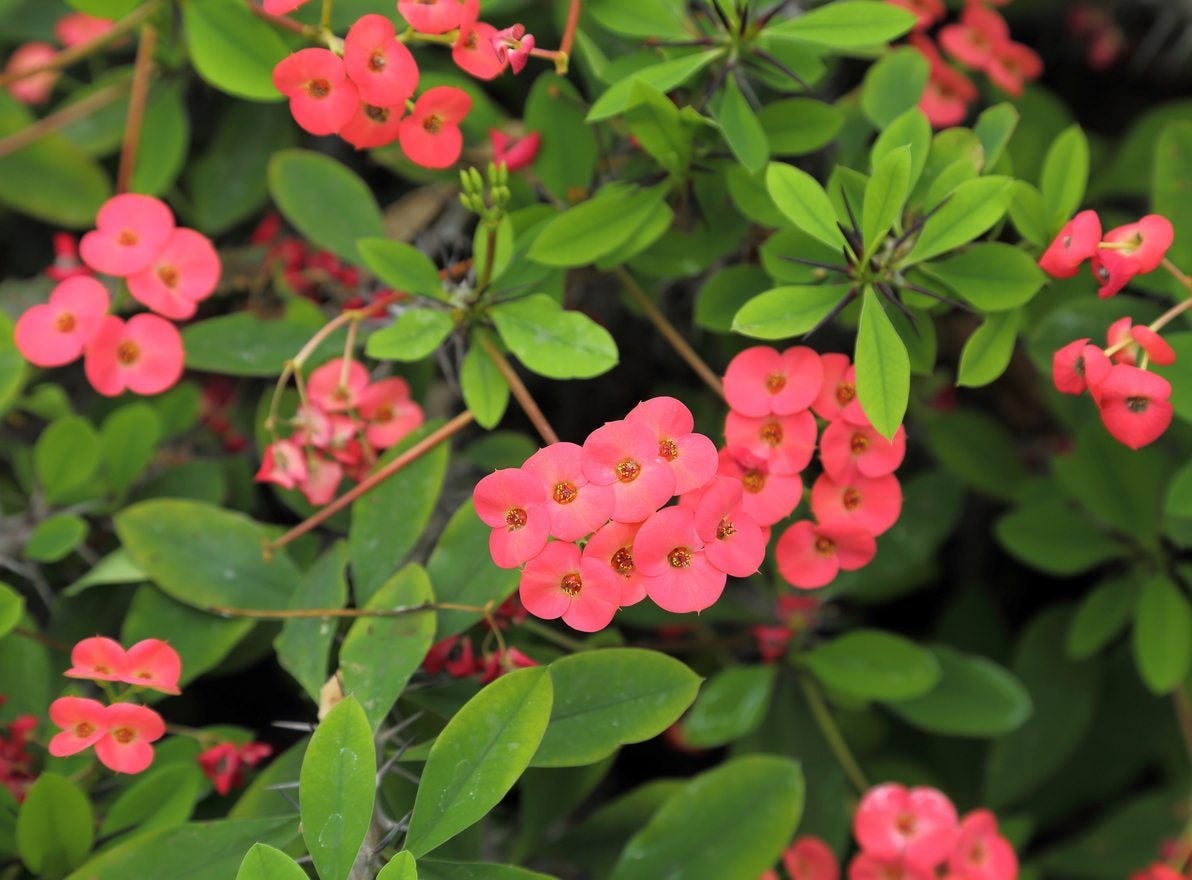Cutting Back Crown Of Thorns: How To Prune A Crown Of Thorns Plant


Most types of crown of thorns (Euphorbia milii) have a natural, branching growth habit, so extensive crown of thorns pruning isn’t generally needed. However, some fast-growing or bushier types may benefit from pruning or thinning. Read on to learn the basics of pruning crown of thorns.
About Pruning Crown of Thorns
There are a couple of important things to know before you begin pruning crown of thorns. First of all, this gorgeous plant was named for a reason – the thorns are wicked. You’ll need long sleeves and a pair of sturdy garden gloves for pruning crown of thorns. Even more importantly, be aware that the gooey, milky sap that oozes from a cut plant may cause severe skin irritation in some people, and it can do serious harm if it gets in your eyes. Be careful about cutting back crown of thorns when children and pets are present because the sap contains toxic compounds. One would have to ingest a lot of the plant to have serious ill effects, but a small amount can irritate the mouth and may cause stomach upset. Additionally, the sap will definitely stain your clothing and gum up your tools. Wear old clothes and save your expensive tools for tamer jobs. Old paring knives from a thrift store will work just fine and are easier to clean.
How to Prune a Crown of Thorns Plant
If you’re in need of trimming crown of thorns, the good news is that this is a forgiving plant, and you can prune it however you like to create the desired size and shape. Two or three new branches will emerge at every pruned branch, creating a bushier, fuller plant. As a general rule, it works best to cut the stem at its point of origin to prevent stubby, unsightly branches. Prune a crown of thorns to remove weak, dead, or damaged growth or branches that rub or cross other branches.
Sign up for the Gardening Know How newsletter today and receive a free copy of our e-book "How to Grow Delicious Tomatoes".

A Credentialed Garden Writer, Mary H. Dyer was with Gardening Know How in the very beginning, publishing articles as early as 2007.